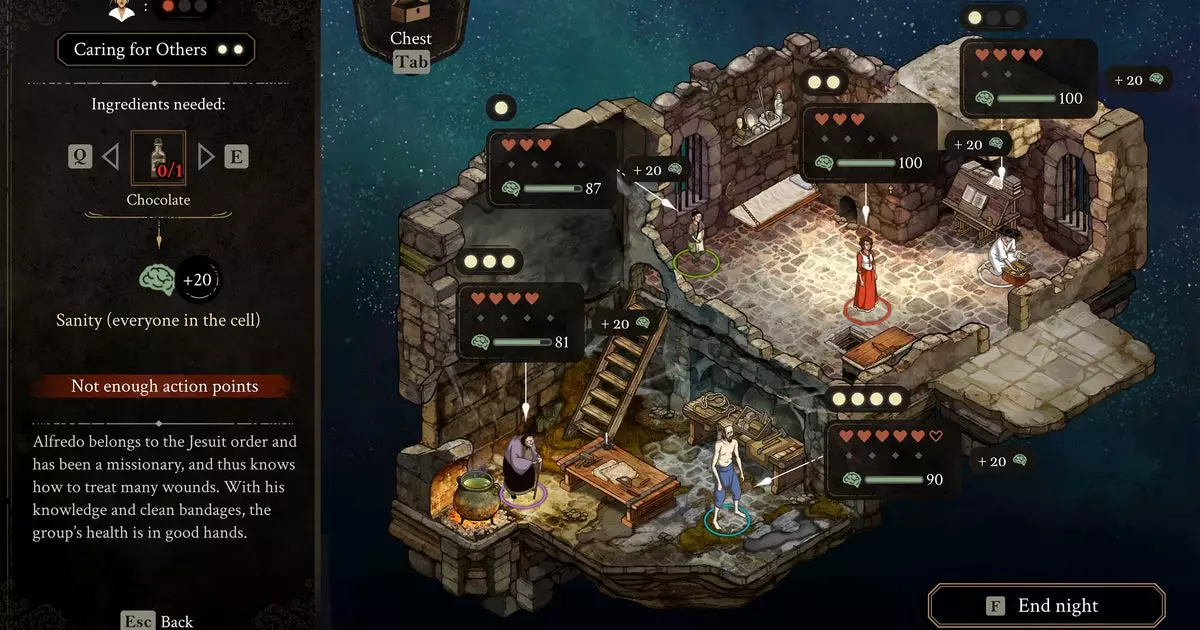The gaming community has eagerly awaited the arrival of The Game Kitchen’s latest project, The Stone of Madness. This isometric tactical stealth game transports players to an 18th-century monastery, where interactive storytelling intertwines with a nuanced approach to gameplay. Unlike typical stealth games that focus solely on action and evasion, this title elevates the experience by placing an emphasis on character development and psychological depth, as players navigate a world that juxtaposes serene monastic life with nightmarish Catholic art and lurking dangers.
At the core of The Stone of Madness lies a group of uniquely crafted characters, each imbued with specific strengths and weaknesses, reminiscent of classic titles like Commandos. However, The Stone of Madness takes these elements further by incorporating sanity bars and distinct phobias, which add layers of complexity and authenticity. Players must navigate characters through a labyrinth fraught with challenges, combatting not only physical foes but also the mental strains imposed by their environment. This mechanism not only enriches the gameplay but also encourages a deep emotional connection between the players and the characters as they evolve according to the in-game stresses.
What sets The Stone of Madness apart is its philosophical underpinnings, particularly in relation to the concept of time. Drawing upon Michel Foucault’s insights from his seminal work, Discipline and Punish, the game invites players to consider the historical significance of monastic orders in shaping modern societal time perceptions. Foucault describes these monastic communities as experts in time management, with their daily rituals establishing rhythms that have seeped into contemporary life. This thematic exploration adds a layer of depth that many games often overlook, making players think critically about their in-game experiences and how they resonate with larger historical narratives.
Gameplay Dynamics with Temporal Challenges
The gameplay mechanics reflect this philosophical backdrop in a compelling manner. The Stone of Madness employs an intricate day-night cycle, requiring players to strategically align their actions within specific temporal frames to succeed in their missions. This paves the way for innovative tactical choices, where timing becomes as crucial as skill. The game pays homage to its predecessors, including the classic Spanish game The Abbey of Crime, which explored similar themes. By weaving a narrative that emphasizes monastic expertise in time management, The Stone of Madness provokes thoughts about the intersection of time, gameplay, and narrative structure.
As The Stone of Madness makes its debut, the anticipation surrounding its release is palpable. Its fusion of philosophical concepts with innovative game mechanics has the potential to reshape how players perceive game worlds and their inherent narratives. While there may be critiques surrounding its execution, including plot coherence or control responsiveness, the core premise showcases the promise of a unique gaming experience. The exploration of monastic life through gameplay not only adds an engaging layer of strategy but also invites philosophical reflections on time – a conversation worth pursuing beyond this game alone. As players embark on this immersive journey, The Stone of Madness appears poised to leave an indelible mark on the tactical stealth genre.

